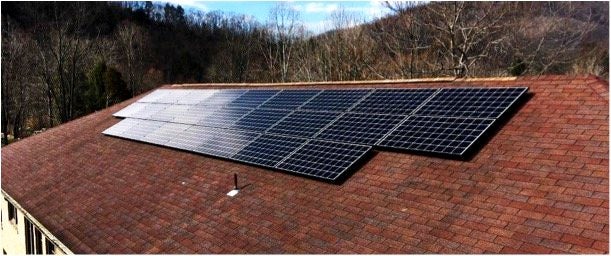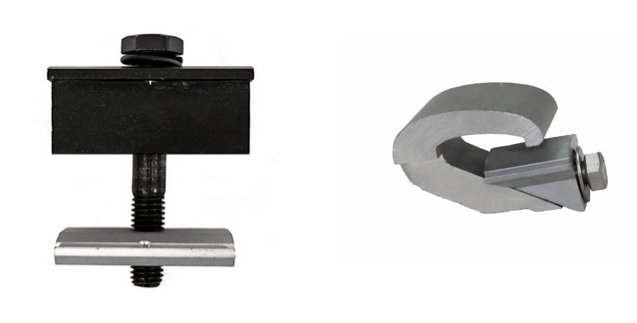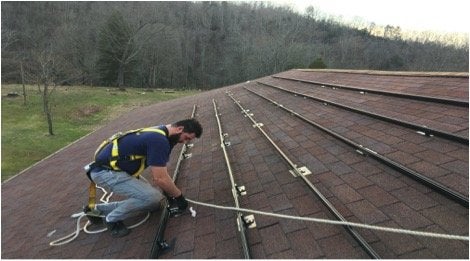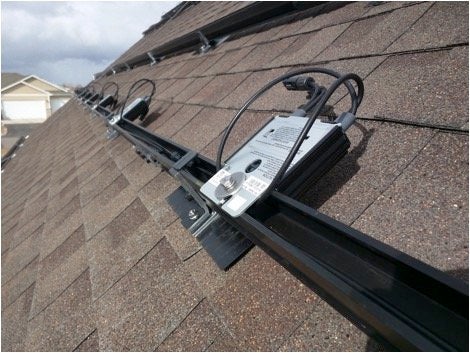How Are Solar Panels Attached to a Roof?

The Process
At Solar Holler we believe solar should be the most affordable choice for our neighbors across Appalachia, it should last for generations, and it should look—if not beautful—like it “fits” with the surrounding archtecture.be stunningly beautiful. But, you might wonder, “How do those things get attached to the roof and how do they stay up there?” For the curious, here we explore the step by step process of attaching a solar array to a roof, both shingle and metal.
Flashing or Curru Brackets: The first step begins with a flashing (or flash-kit) for shingle roofs or a corru bracket for metal roofs. After the installers have properly mapped out the roof and marked the array length and width, they will designate penetration points along the rafters or purlins to anchor either the flashing or corru brackets. Flashings are carefully slid partially under existing shingles and when in place, an “L” foot is placed over the circular opening surrounded by a rubber grommet and anchored into the rafter with a lag bolt then resecured with roof sealant between the roof and flashing. On a corrugated metal roof, the corru brackets straddle the ribs and are fastened by four roofing screws, adding the “L” foot after the bracket is attached.

Once “L” feet are secured to either the flashing or corru bracket, railing gets placed on the roof then a bolt is placed through the adjustable portal of the “L” foot and into a slot in the the railing system. This is continued through the length of the rail. The crew will then perform a series of adjustments and leveling to the loosely connected rails. Once set, bolts are tightened.

Now that rails are in level, installers will measure out and attach optimizers, which will be hidden underneath the panels and allow them to communicate.With Optimizers secure, solar panels can now begin to be placed on top of the railing system. The panels are wired to the optimizer, squared and ready to be attached to the the rail. Between the panels, installers will use mid clamps to attach panels to the rail and each other. Panels on the end of the array are secured by end clamps which are covered by end caps to make for a clean, sleek aesthetic.






